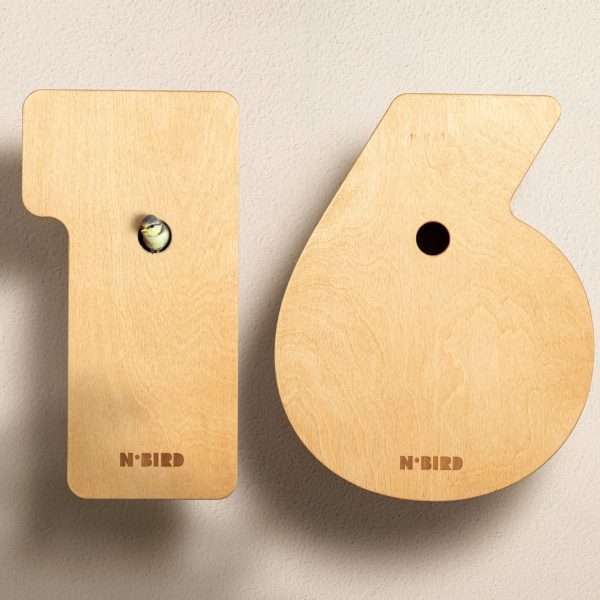Polish design studio Nicer Design has created the Numbird collection of digit-shaped nesting boxes for small birds in urban areas.
Nicer Design founder Mikołaj Nicer and his father Paweł Frej developed the plywood boxes to be used as house numbers and increase nesting space for birds.
“We decided to come up with a solution to help small birds quickly increase their populations in urban spaces,” Nicer told Dezeen.
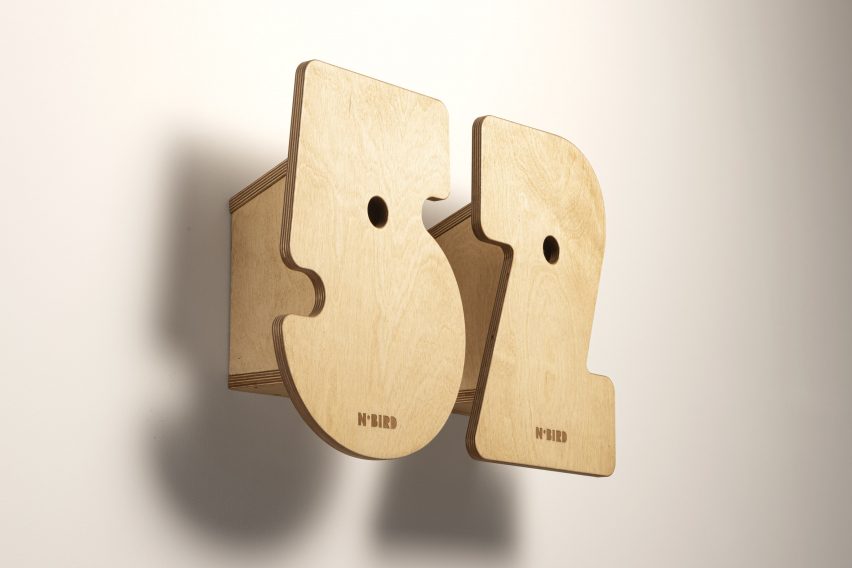
Numbird is a refined iteration of the studio’s previous project, Our Common House, which had a clay casting.
Nicer Design created the updated version from timber to allow it to be commercially produced.
“Analyses showed that ceramics weren’t suitable due to production, transport and weather resistance issues,” Nicer explained.
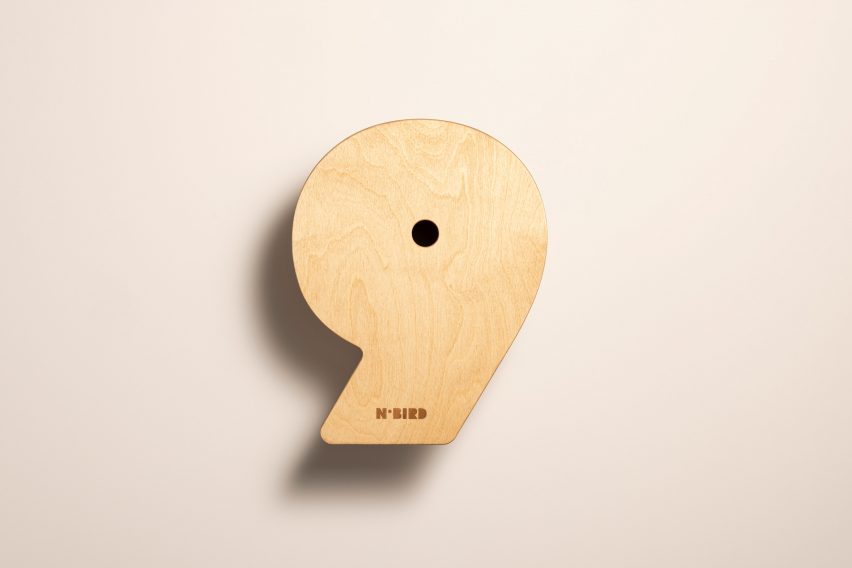
According to the designers, the timber was also more durable.
“We found moisture-resistant plywood to be a good alternative, offering excellent nesting conditions, greater durability and predictability than regular wood. We treat the plywood with natural oil and recommend reapplying it every 1-2 seasons to extend the product’s lifespan.”
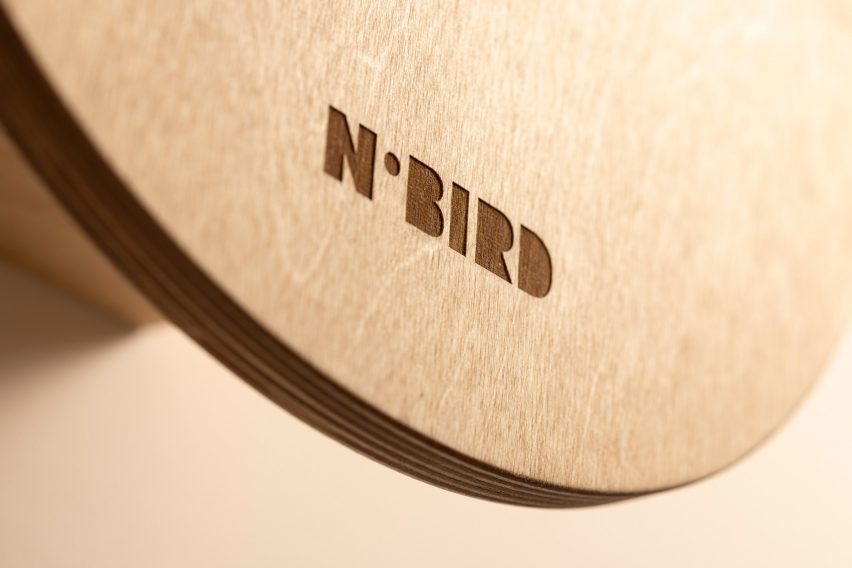
The product’s redesign also allowed it to be turned into a DIY kit, with a self-assembly process that Nicer hopes will engage younger members of the family.
For this reason Numbird was referred to as a “family project” by Nicer and his father.
“Assembling the birdhouses together strengthens family bonds and gives both children and parents the satisfaction of completing a practical task,” Nicer said.
“Numbird serves as a pretext for spending time together.”
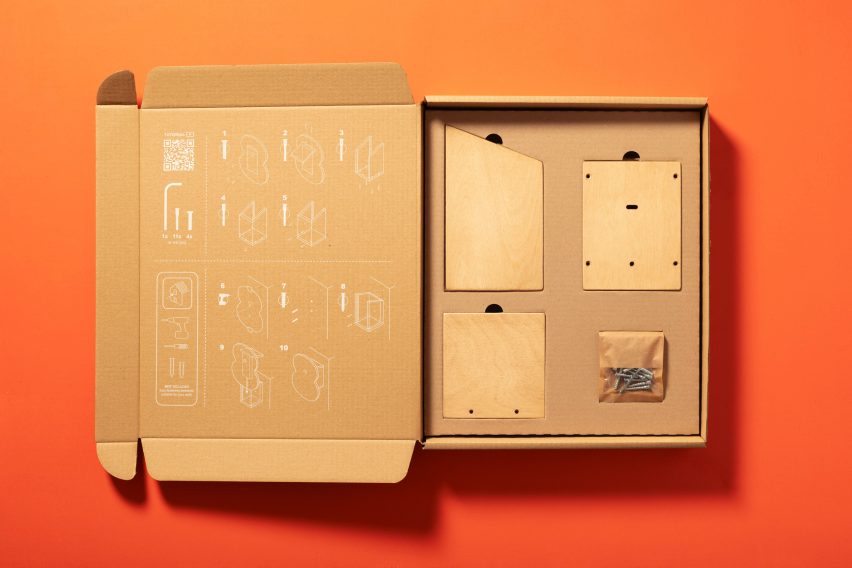
The Numbird typeface has narrow angles and indentations, alongside a defined curved, bold appearance, which was developed to adhere to the product’s purpose of a bird nesting box.
The boxes are hidden behind each digit – the dimensions of which directly informed the design of the typeface.
“The birdhouse itself had to meet the standard size requirements for small birds,” Nicer said.
“Its dimensions guided our search for the typeface’s character, limited to the maximum weight of the letters and numbers – extra bold.”
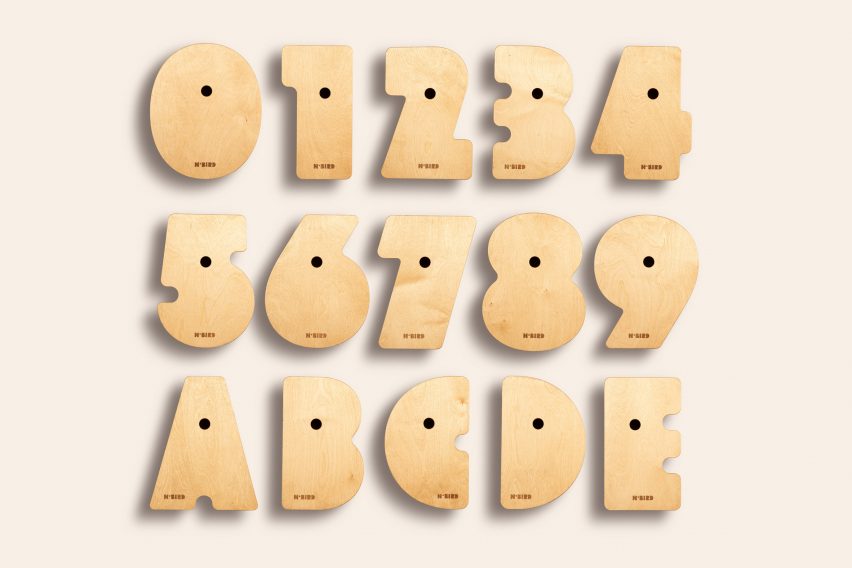
As door numbers are often used together, the studio placed each box centrally behind each digit to ensure their readability when placed next to one another.
“These very specific constraints allowed us to create a unique font characteristic of the Numbird brand.”
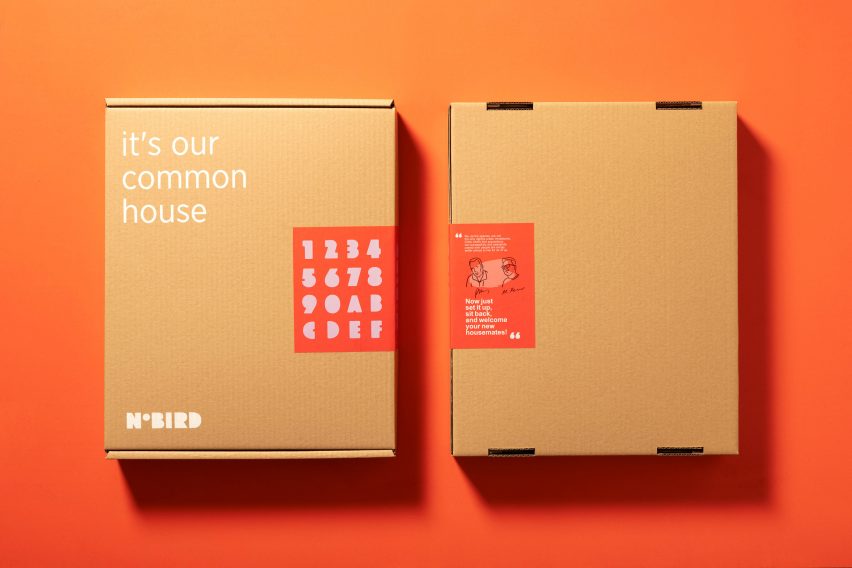
Other unique bird boxes on Dezeen include a 3D printed bird box by Brooks + Scarpa and a nesting box repurposed from IKEA furniture by Beep Studio.

